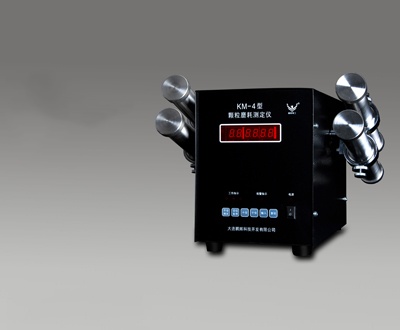KM-4D Particle Abrasion Tester
KM-4D Particle Abrasion Tester Technical Guide
1. What This Machine Does
- Tests how resistant materials are to scratching and wearing
- Measures material loss when rubbed with abrasive particles
- Helps improve product durability in industries like mining, coatings, and manufacturing
2. Simple Explanation
- Rotating wheel presses abrasive particles against test samples
- Measures how much material wears away after testing
- Like a scientific version of sandpaper rubbing
3. Key Features
- Digital control panel for easy operation
- Adjustable pressure and rotation speed
- Precise weight measurement (0.1mg accuracy)
- Multiple test modes available
4. Technical Details
- Max load: 50N (about 5kg force)
- Rotation speed: 30-200 rpm
- Test duration: 1 minute to 24 hours
- Sample size: up to 50mm diameter
- Power: 220V, 50Hz
5. Why It's Important
- Predicts how long parts will last in rough conditions
- Helps choose the most durable materials
- Meets industry standards for wear testing
6. How To Use It
Simple Steps:
1) Cut sample to correct size
2) Weigh it precisely
3) Mount in machine with abrasive paper
4) Set test conditions (pressure, speed, time)
5) Start test
6) Weigh again after test to measure material loss
7. Understanding Results
- Lower weight loss = better wear resistance
- Can compare different materials side-by-side
- Helps calculate expected product lifespan
8. Where It's Used
- Mining equipment manufacturers
- Protective coating companies
- Automotive part suppliers
- Construction material developers
9. Care Instructions
- Clean after each use
- Check moving parts monthly
- Calibrate yearly
- Store in dry environment
10. Safety Features
- Emergency stop button
- Automatic shut-off
- Protective safety cover
- Overload protection
11. Why It's Better Than Old Methods
- More consistent than hand testing
- Precise digital measurements
- Repeatable test conditions
- Saves testing time
12. Extra Options Available
- Different abrasive materials
- Temperature control
- Computer data logging
- Special sample holders
What the Numbers Mean:
- Wear Rate = (Weight Loss) ÷ (Test Time × Pressure)
- Lower numbers mean better wear resistance
- Typical units: mm³/(N·m) or mg/1000 cycles


